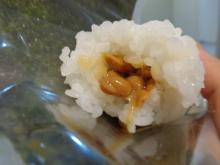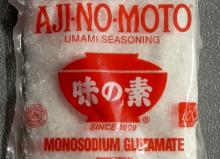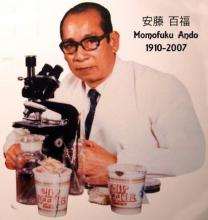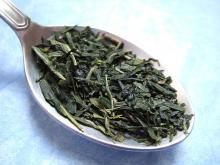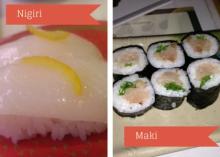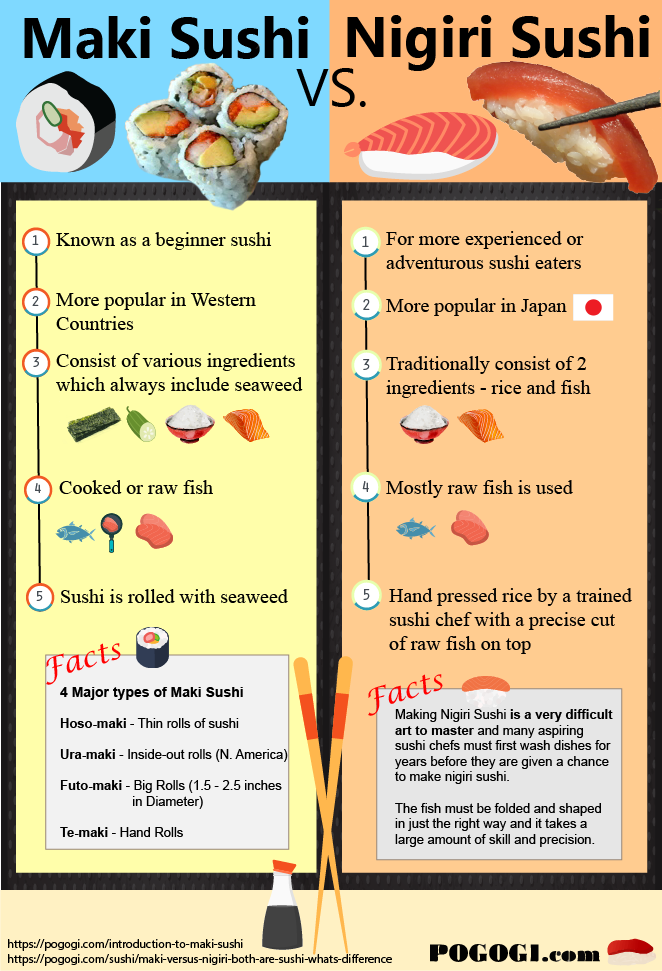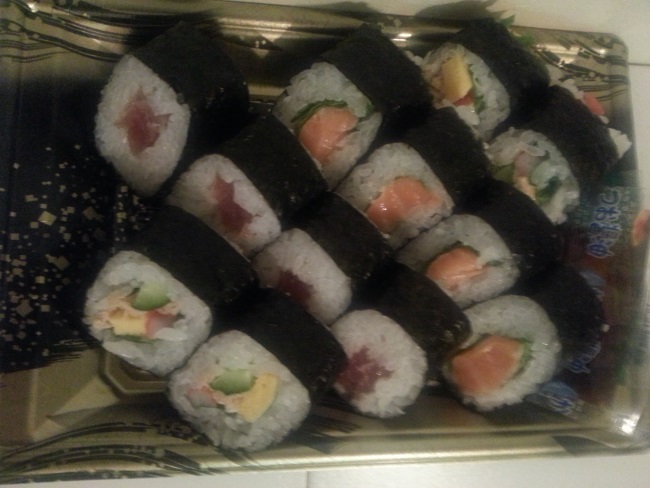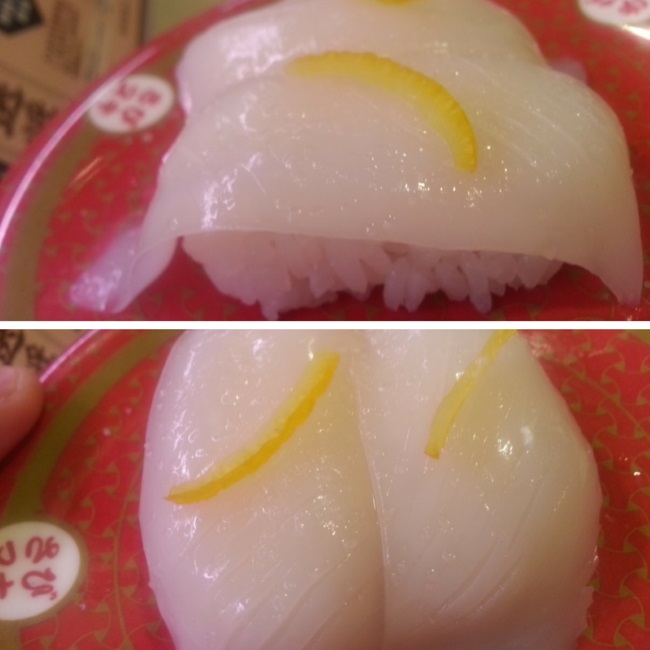If washoku is traditional Japanese cuisine, yōshoku is mainly European and American (“Western”) food tweaked by the Japanese and is now considered as Japanese as any other native food. Yōshoku began in the Meiji era (1868-1912) in Western-style restaurants that catered to foreigners. The Japanese cooks who worked in those restaurants then opened their own places all over Japan and propagated yōshoku.
During the Meiji era, Western ingredients were hard to come by, so cooks had to adapt using what they had, and in the process, tailored the food to Japanese tastes. “Pōku katsuretsu” (pork cutlets) became “tonkatsu” which was served with rice and miso soup. On the other hand, some Western-style foods such as macaroni gratin, consomme, potage and beef stew were emulated as they were, using the same cooking methods.
Omuraisu (Omelette Rice)
To make omuraisu, mix ketchup, small pieces of chicken, sliced button mushrooms and some peas with cooked rice. Cook an omelette in a pan and wrap the flavored rice in the omelette. It’s ideal that not a single grain of rice should show, and it may take a few tries to do it perfectly without breaking the omelette.
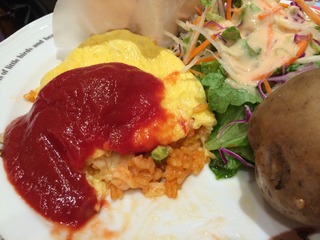
Demi glace sauce is then poured on top of the omelette. Sometimes, omuraisu comes in various iterations such as omukare (omelette curry rice) and omushichū (omelette rice stew). Yakisoba (stir-fried noodles) is sometimes used in place of rice, and the dish is called omusoba.

Hayashiraisu (Hashed Beef/Beef Stroganoff with Rice)
Hayashiraisu is perfect on a wintry day. There is something comforting about thin slices of meat and onions cooked in butter, red wine and demi glace sauce which is then poured over piping hot rice. The meat can be beef or pork, and other vegetables such as carrots and sliced button, shiitake or shimeji mushrooms are sometimes added. Some restaurants even add tomato puree or tomato ketchup to the demi glace sauce.
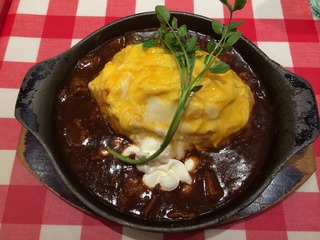
If the stew is poured on top of omuraisu, it becomes omuhayashi. It doesn’t have to be a complicated dish made from scratch - there are pre-prepared, home cook-friendly square tablets and bottles of hayashiraisu sauce in stores.
Kareraisu (Curry Rice)
Curry in the UK was imported from India, and from that connection was brought over to Japan through the British in the late 1800s. The name for a Japanese curry dish is called Kareraisu and is popular with people of all ages. It is simply curry poured over cooked rice, and is enjoyed at home, in yōshoku restaurants and karesaisu restaurant chains.
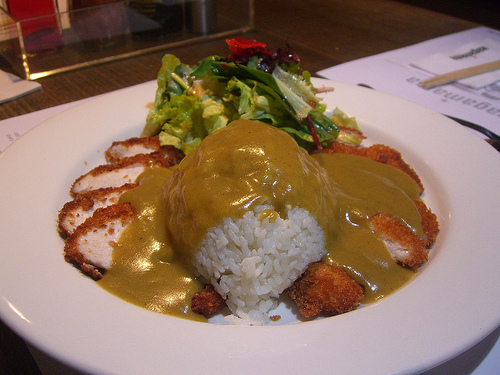
 by avlxyz Japanese Curry Katsu
by avlxyz Japanese Curry Katsu
First introduced in a cookbook dated 1872, its ingredients list evolved from having fish and oysters to the modern version consisting of curry roux; chicken, beef or pork; and the “holy trinity” of onions, carrots, potatoes. Like hayashiraisu, kareraisu is made at home using commercial tablet roux, but each household has its secret ingredient like coffee, miso or even cheese for an even more savory curry.
.jpg)
Furai (Fried Food)
From the cooking method “deep fry,” furai is basically seafood and vegetables drenched in flour, egg, breadcrumbs and then fried. (Meat cooked this way is called “katsu” such as the “tonkatsu” mentioned above. Click -> More info on the origins of Tonkatsu and Furai.)
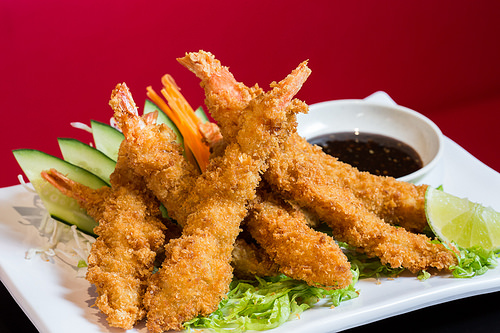
 by gustavofumero
by gustavofumero
The most popular furai is ebi furai or fried shrimp. Not to be confused with shrimp tempura, ebi furai is breaded, but it is said that its roots lie in tempura when cooks during the Meiji era tried to combine the two. The most common sauce to ebi furai is tartar sauce, but others like tonkatsu sauce, lemon juice or ketchup are also favored. Kids especially love this dish, with pre-cooked, frozen ones available for their bento lunch boxes.
Korokke (Croquettes)
From the French word “croquette,” the most basic korokke has potatoes that are mashed and mixed with bechamel sauce; then shaped into a patty; dredged in flour, egg and breadcrumbs and then deep-fried. Korokke may also have ground meat and minced onions mixed in with the potatoes.
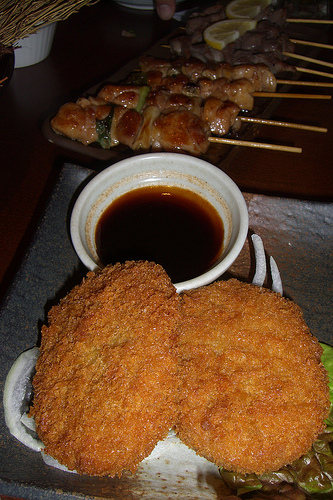
 by Social Geek
by Social Geek
They can be made at home, but they are sold in every supermarket in the deli section, sometimes even put on top of soba or udon noodles, and even made into a sandwich. Lovers of creamy sauces will enjoy kurīmu korokke which is made of a white sauce with bits of crab, shrimp or corn mixed in it. Relatively inexpensive, korokke is a popular afternoon snack among kids that can be bought in the convenience store.
Hambāgu (Hamburger / Salisbury Steak)
Hambāgu is not your typical McDonald’s burger or the popular western Sushi burger as this is basically a patty without the bread and the condiments. In Japan, ground beef or pork (or both) are kneaded with breadcrumbs, egg, minced onions and seasoning, shaped into ovals and are then cooked in a frying pan.
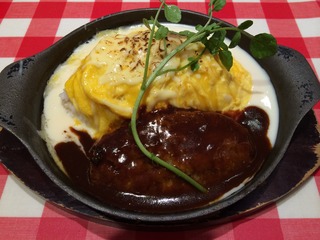
It is typically served with rice, a salad and a sauce. When stewed in a savory soup, it is called nikomi hambāgu or hambuger stew. It is a very popular dish in “family restaurants” which are similar to the American Denny’s chain, with hambāgu specials with various toppings such as cheese, grated daikon radish and ponzu sauce, demi glace sauce, or pepper sauce featured on the menu.
Naporitan (“Neapolitan” Spaghetti)
The first commercial spaghetti was produced in Japan in the 1950s. To demonstrate this new product, the makers decided on making spaghetti napoletana but at the time, tomato puree and meat were hard to come by and relatively expensive, so ketchup and processed meats were used. The dish then evolved to the simple and popular naporitan.
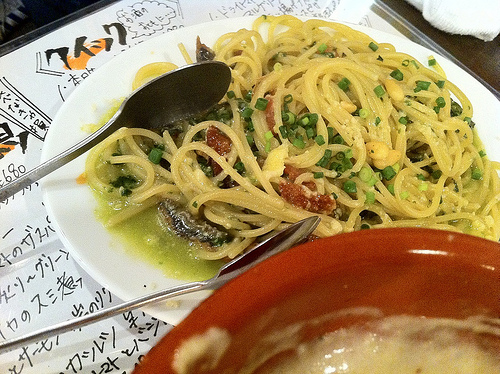
 by hirotomo
by hirotomo
Adapted from the Italian spaghetti napoletana, naporitan is truly an original pasta dish that developed in Japan. Cooked noodles, bacon, sliced onions and slivered green bell peppers are mixed into ketchup and then heated. While modern Japanese have very sophisticated palates and can reproduce Italian pastas very faithfully, naporitan is still beloved because it hearkens back to a nostalgic, simpler time.
Rōru Kyabtesu (Cabbage Roll)
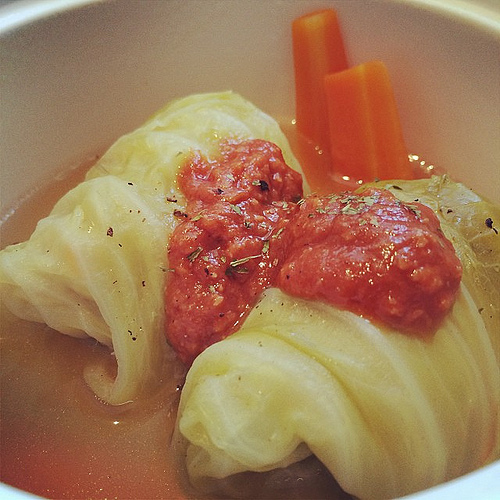
 by norio_nomura
by norio_nomura
Rōru kyabtesu is a boiled cabbage leaf stuffed with ground meat, minced carrots and minced onions and then cooked in a soup. To prevent the stuffing from leaking out, toothpicks are used to secure the edges of the roll. It can be stewed in consomme, tomato soup or even in a white sauce. It is also a popular addition to oden, the steaming hot dish of fishcakes in a dashi broth.
Guratan / Doria (Gratin / Gratineed Rice)
While gratin is a French word that means to brown the surface of a dish in an oven, guratan in Japan refers to a dish that contains macaroni in bechamel sauce, topped with cheese and browned in an oven. With the numerous steps involved in its cooking, from boiling the noodles, making the sauce, assembling the dish to browning it in the oven, frozen guratan and convenience store guratan and very popular yōshoku.

 by t-mizo
by t-mizo
On the other hand, doria is similar to guratan but features cooked rice in place of noodles. Anything can go into a doria, but the most popular is seafood doria with shrimp and squid and bolognese (meat sauce) doria.


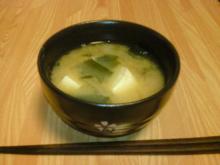

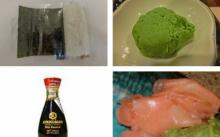


.jpg)





